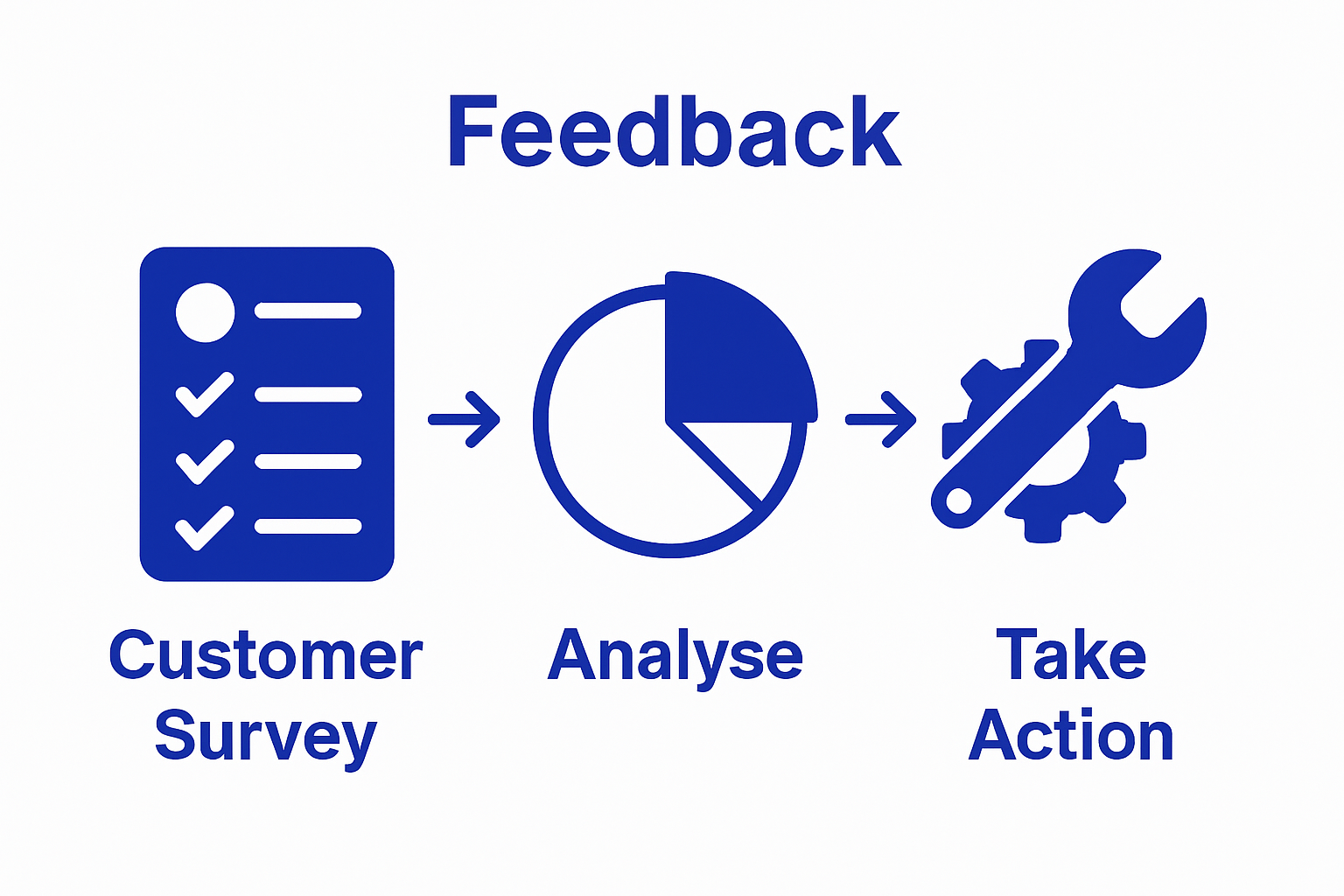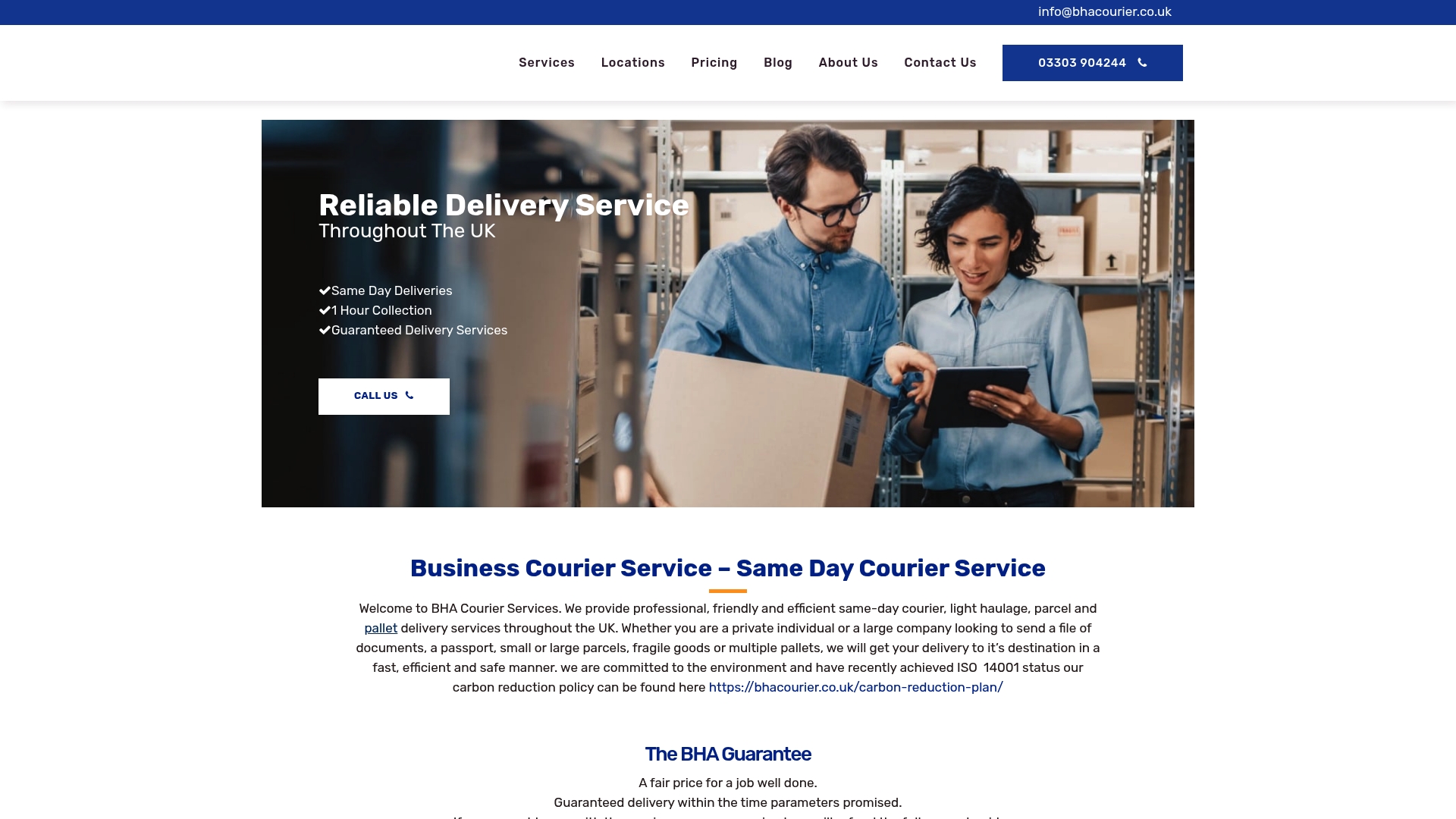
29 Aug How to Measure Customer Satisfaction: A Step-by-Step Guide
Measuring customer satisfaction sounds straightforward, yet even businesses with the best intentions often find themselves guessing what truly matters to their clients. And here is something you might not expect. More than three out of four organisations rely on just one or two simple survey scores, missing out on deeper insights that drive genuine improvement. There is a smarter approach hiding in plain sight—one that turns feedback into a tool for transformation.
Table of Contents
- Step 1: Define Key Customer Satisfaction Metrics
- Step 2: Design Your Customer Satisfaction Survey
- Step 3: Distribute the Survey to Customers
- Step 4: Analyze Survey Results for Insights
- Step 5: Implement Changes Based on Feedback
- Step 6: Monitor and Adjust Your Approach Continuously
Quick Summary
| Key Point | Explanation |
|---|---|
| 1. Define clear customer satisfaction metrics | Establish metrics like CSAT, CES, and NPS for actionable insights into customer experiences. |
| 2. Design an engaging customer satisfaction survey | Create surveys with logical flow and varied questions to obtain meaningful feedback without overwhelming respondents. |
| 3. Use multiple channels for survey distribution | Distribute surveys via email, social media, and SMS to increase response rates and reach diverse customer groups. |
| 4. Analyse data for actionable insights | Combine quantitative data and qualitative feedback to identify trends and areas for improvement in customer satisfaction. |
| 5. Implement changes and monitor outcomes continuously | Prioritise changes based on feedback, assess their impact, and adjust strategies for ongoing customer satisfaction enhancements. |
Step 1: Define Key Customer Satisfaction Metrics
Measuring customer satisfaction begins with establishing clear, meaningful metrics that provide genuine insights into your customers’ experiences. This foundational step transforms vague perceptions into concrete, actionable data that can drive strategic improvements across your business operations.
The process of defining customer satisfaction metrics requires a strategic approach that goes beyond simple numerical ratings. Three primary metrics emerge as critical for comprehensive understanding: Customer Satisfaction Score (CSAT), Customer Effort Score (CES), and Net Promoter Score (NPS). Each metric offers unique perspectives on customer experience and loyalty.
Customer Satisfaction Score represents the most straightforward measurement, typically captured through direct survey questions asking customers to rate their overall experience. Businesses often use a scale from 1 to 5 or 1 to 10, allowing immediate quantification of customer sentiment. The key is crafting questions that are clear, specific, and aligned with your service or product’s core value propositions.
Customer Effort Score evaluates how easy or difficult customers find interactions with your business. This metric recognizes that customer convenience can be more impactful than traditional satisfaction measures. By understanding the friction points in customer journeys, organisations can streamline processes and reduce unnecessary complexity.
Net Promoter Score provides insights into customer loyalty by asking a fundamental question: “How likely are you to recommend our service to others?” Respondents are categorized into promoters, passives, and detractors, creating a nuanced view of potential word-of-mouth impact.
To implement these metrics effectively, consider developing a comprehensive customer feedback strategy that integrates multiple data collection methods. Surveys, interviews, and ongoing feedback mechanisms will help you gather robust, representative data.
Successful metric definition requires ongoing refinement. Regularly review your chosen metrics, ensure they remain relevant to your business objectives, and be prepared to adapt your measurement approach as customer expectations evolve. The goal is not just measurement, but continuous improvement driven by genuine customer insights.
This table provides an at-a-glance overview of the main steps for measuring customer satisfaction, including their objectives and expected outcomes.
| Step | Objective | Key Outcome |
|---|---|---|
| Define Key Customer Satisfaction Metrics | Establish relevant metrics for measurement | Clear, actionable data sources |
| Design Your Customer Satisfaction Survey | Create effective survey questions and structure | Meaningful and reliable feedback |
| Distribute the Survey to Customers | Maximise reach and encourage participation | Robust and representative response data |
| Analyse Survey Results for Insights | Interpret data for trends and actionable findings | Identified areas for improvement |
| Implement Changes Based on Feedback | Apply learnings to improve customer experience | Enhanced satisfaction and loyalty |
| Monitor and Adjust Continuously | Refine methods over time to suit evolving expectations | Continuous improvement and adaptation |
Step 2: Design Your Customer Satisfaction Survey
Designing an effective customer satisfaction survey transforms raw data collection into a strategic tool for understanding your customers’ experiences. This critical step requires thoughtful planning, precision, and a deep understanding of what insights you truly want to uncover.
Survey design is both an art and a science, demanding careful consideration of question structure, language, and overall approach. The most successful surveys strike a delicate balance between comprehensive information gathering and respondent engagement. Begin by clearly defining your primary objectives. Are you seeking to understand overall satisfaction, identify specific service improvements, or gauge customer loyalty?
Structure your survey with a logical flow that feels conversational and intuitive. Start with broader, more general questions before diving into specific details. Open with neutral, welcoming language that encourages honest feedback. For instance, begin with questions that allow customers to share their overall experience before requesting more nuanced evaluations.
Question design requires meticulous attention. Use a mix of question types to capture comprehensive insights. Closed-ended questions with rating scales provide quantifiable data, while open-ended questions allow customers to share detailed narratives. Aim for clarity and simplicity in your language, avoiding industry jargon or complex terminology that might confuse respondents.
Consider the survey length carefully. Lengthy surveys often lead to respondent fatigue and incomplete responses. Typically, the ideal survey takes no more than 5-7 minutes to complete. This means limiting your questions to 10-15 well-crafted items that directly align with your key satisfaction metrics.
Explore our comprehensive customer feedback methodology to understand how professional survey design can transform your customer insights. The most effective surveys are not just data collection tools, but strategic instruments that demonstrate your commitment to understanding and improving customer experiences.
Before finalizing your survey, conduct a pilot test with a small group of customers or team members. This crucial step helps identify potential confusing questions, assess survey flow, and ensure the instrument truly captures the insights you seek. Pay attention to feedback about question clarity, survey length, and overall user experience. Remember, a well-designed survey is an invitation to dialogue, not an interrogation.
Step 3: Distribute the Survey to Customers
Distributing your customer satisfaction survey requires strategic planning and a thoughtful approach that maximizes response rates and ensures meaningful data collection. This step transforms your carefully crafted survey from a theoretical document into an actionable tool for gathering critical customer insights.
Digital distribution channels offer the most flexible and cost-effective approach to survey deployment. Email remains a primary method, allowing direct communication with customers who have already engaged with your business. However, the key is not just sending an email, but creating a compelling invitation that encourages participation. Craft a concise, personalized message that explains the survey’s purpose, emphasizes how customer feedback drives meaningful improvements, and clearly communicates the expected time commitment.
Multiple distribution channels can significantly enhance your response rates. While email serves as a primary method, consider supplementing it with alternative approaches. Social media platforms, website pop-ups, and targeted SMS messages can reach customers who might miss traditional email communications. **The goal is to make participation as convenient and accessible as possibl
Use the following table to compare different survey distribution channels and their advantages, ensuring wider reach and higher customer engagement.
| Distribution Channel | Advantages | Considerations |
|---|---|---|
| Direct, personal, trackable | Can be missed or end in spam | |
| Social Media | Reaches broader and varied customer base | Less personal; message can be diluted |
| Website Pop-up | Captures engaged users at point of interaction | May interrupt customer journey |
| SMS | Immediate, high open rates | Limited space; may feel intrusive |
e**.
Timing plays a crucial role in survey distribution. Avoid sending surveys during peak business hours or immediately after a transaction when customers might feel overwhelmed. Instead, target periods when customers are more likely to have sufficient time and mental bandwidth to provide thoughtful responses. For service-based businesses, sending a survey within 24-48 hours after a customer interaction often yields the most accurate and fresh feedback.
Encourage participation by highlighting the tangible benefits of customer input. Communicate clearly that their feedback directly influences service improvements, and where possible, offer a small incentive such as entry into a prize draw or a modest discount on future services. This approach demonstrates that you genuinely value their time and perspective.
Learn more about our comprehensive customer feedback strategies to understand how professional survey distribution can transform customer insights. Remember, the most successful surveys are those that make customers feel heard and appreciated.
After distribution, monitor response rates carefully. If participation seems low, be prepared to send gentle reminder communications or adjust your distribution strategy. The key is persistence without becoming intrusive, always maintaining a respectful and customer-centric approach to gathering valuable feedback.
Step 4: Analyze Survey Results for Insights
Analyzing survey results transforms raw data into actionable intelligence, revealing the deeper narrative behind customer experiences. This critical step bridges the gap between information collection and strategic improvement, requiring a systematic and nuanced approach to data interpretation.
Quantitative data provides the foundation of your analysis, offering numerical insights into customer satisfaction levels. Begin by calculating basic statistical measures such as mean scores, median values, and frequency distributions. These metrics help you understand overall trends and identify specific areas of strength or concern. Pay close attention to patterns in rating scales, looking for consistent themes across different questions and customer segments.
Qualitative responses demand a more interpretative approach. Read through open-ended comments carefully, looking for recurring themes, specific language, and emotional undertones. Clustering similar comments can reveal systemic issues or unexpected positive insights that might not be apparent in numerical data. Look beyond individual complaints to understand broader patterns that could indicate deeper organizational challenges or opportunities for innovation.
Contextualizing your results is crucial. Compare current survey data against previous measurements to track progress and identify trends over time. This longitudinal perspective helps distinguish between temporary fluctuations and meaningful shifts in customer perception. Consider segmenting your analysis by customer demographics, service types, or interaction channels to uncover more nuanced insights about different customer groups.
Data visualization can transform complex survey results into digestible, compelling narratives. Create clear charts, graphs, and dashboards that highlight key findings. Visual representations make it easier to communicate insights to stakeholders and drive decision-making. Use color-coded heat maps, bar graphs, and trend lines to make your data more accessible and impactful.
Explore our comprehensive approach to customer feedback analysis to understand how professional data interpretation can unlock transformative business insights. The most valuable analysis goes beyond surface-level numbers, revealing the human stories behind customer experiences.
Finalize your analysis by developing a clear summary of key findings, potential action items, and recommended strategic responses. A robust analysis not only identifies challenges but also presents actionable pathways for continuous improvement. Remember, the ultimate goal is not just understanding customer satisfaction, but using these insights to create meaningful, positive changes in your business approach.

Step 5: Implement Changes Based on Feedback
Implementing changes based on customer feedback transforms survey insights from passive information into dynamic organizational improvement. This critical step bridges the gap between understanding customer perspectives and creating meaningful operational transformations that directly address customer needs.
Prioritization becomes your strategic cornerstone when translating feedback into actionable changes. Not all insights carry equal weight, so develop a systematic approach to evaluating potential improvements. Consider three key dimensions when prioritizing: potential impact on customer experience, feasibility of implementation, and alignment with broader business objectives. Focus first on changes that can deliver significant customer value without requiring excessive resources or fundamental restructuring.
Organizational communication plays a pivotal role in successful implementation. Before executing changes, create a comprehensive internal communication strategy that explains the rationale behind proposed modifications. Engage employees across different departments, helping them understand how customer feedback directly influences strategic decisions. This approach transforms change from a top-down directive into a collaborative improvement process.
Implementation requires careful planning and incremental execution. Break larger changes into manageable phases, allowing for continuous assessment and refinement. Start with pilot programs that test proposed modifications in controlled environments. This approach enables you to validate potential improvements, identify unexpected challenges, and make necessary adjustments before full-scale rollout.
Establish clear metrics to track the effectiveness of implemented changes. Create a monitoring framework that allows you to measure the direct impact of your improvements on customer satisfaction. Compare new performance data against baseline measurements to demonstrate tangible progress and validate the value of your feedback-driven approach.
Discover our comprehensive strategy for transforming customer insights into meaningful business improvements. Remember that implementing changes is not a one-time event but an ongoing commitment to continuous enhancement.
Finally, develop a feedback loop that allows you to continuously reassess and refine your improvements. Customer expectations evolve rapidly, and your ability to adapt swiftly determines long-term success. Treat each implemented change as an opportunity to learn, grow, and demonstrate your unwavering commitment to exceptional customer experience.

Step 6: Monitor and Adjust Your Approach Continuously
Continuous monitoring and adjustment represent the final, critical stage in creating a dynamic customer satisfaction measurement strategy. This ongoing process transforms your initial efforts into a living, adaptive system that evolves with your customers’ changing needs and expectations.
Establishing a regular review cycle is fundamental to successful continuous improvement. Schedule quarterly or semi-annual comprehensive reviews of your customer satisfaction measurement approach. During these reviews, assess not just the results, but the entire methodology of data collection, analysis, and implementation. Look for emerging patterns, changes in customer behavior, and potential refinements to your survey design or distribution strategies.
Technology plays a crucial role in enabling effective continuous monitoring. Invest in robust analytics tools that can track customer satisfaction metrics in real-time, providing immediate insights into performance trends. These tools should offer comprehensive dashboards that allow you to visualize changes, compare historical data, and quickly identify areas requiring immediate attention. The goal is to create a proactive system that anticipates potential issues before they become significant problems.
Develop a systematic approach to tracking the impact of previous improvements. Each change implemented based on customer feedback should be accompanied by specific, measurable objectives. Create a tracking mechanism that allows you to evaluate whether these changes have delivered the intended outcomes. This might involve comparing satisfaction scores before and after implementation, analyzing changes in customer retention rates, or monitoring specific performance indicators related to the implemented modifications.
Cultivate a culture of continuous learning within your organization. Regularly share insights from customer satisfaction data across different departments, encouraging a holistic approach to improvement. Break down silos and create cross-functional teams dedicated to interpreting and acting on customer feedback. This collaborative approach ensures that insights are not confined to a single department but become a driving force for organization-wide enhancement.
Explore our comprehensive approach to ongoing customer experience management to understand how continuous monitoring can transform your business strategy. Remember that customer satisfaction is not a destination but an ongoing journey of improvement and adaptation.
Remain flexible and open to radical reimagining of your approach. As customer expectations evolve and technology advances, be prepared to completely redesign your measurement strategy. The most successful organizations view customer satisfaction measurement as a dynamic, innovative process that requires constant reinvention and creative thinking.
Transform Customer Insights Into Reliable Delivery Outcomes
Struggling to turn your customer satisfaction data into real business results? The step-by-step strategies in this guide shine a light on how customer feedback, measured through key metrics and sharp analysis, shapes stronger customer experiences. Yet, collecting insights means little unless your partners deliver dependable service throughout every transaction.

Choose a courier partner who makes a measurable difference. BHA Courier applies the principles of continuous improvement and rapid response outlined in this guide to every delivery, every time. Our secure, same-day and next-day courier services help you keep your promises to customers while maintaining the high standards your feedback demands. Experience proven professionalism, transparent tracking, and support that put your customer satisfaction objectives first. Take the next step—book your delivery or learn more about our commitment to service at BHA Courier and see how your feedback turns into real logistical solutions today.
Frequently Asked Questions
How can I define customer satisfaction metrics?
To define customer satisfaction metrics, focus on key indicators such as Customer Satisfaction Score (CSAT), Customer Effort Score (CES), and Net Promoter Score (NPS). Each of these metrics provides unique insights into customer experiences and loyalty.
What should I include in my customer satisfaction survey?
Your customer satisfaction survey should include a mix of closed-ended questions with rating scales for quantifiable data, and open-ended questions to capture detailed customer feedback. Aim for clarity, simplicity, and ensure the survey takes no longer than 5-7 minutes to complete.
How do I effectively distribute my customer satisfaction survey?
Distribute your survey through multiple digital channels to maximise reach, such as email, social media, and website pop-ups. Timing is essential; avoid peak business hours and aim to send surveys within 24-48 hours of customer interaction to gather fresh feedback.
What steps should I take after analyzing survey results?
After analysing survey results, prioritise potential changes based on their impact on customer experience and feasibility. Communicate these changes within your organisation, implement them in manageable phases, and establish metrics to track their effectiveness over time.

Sorry, the comment form is closed at this time.